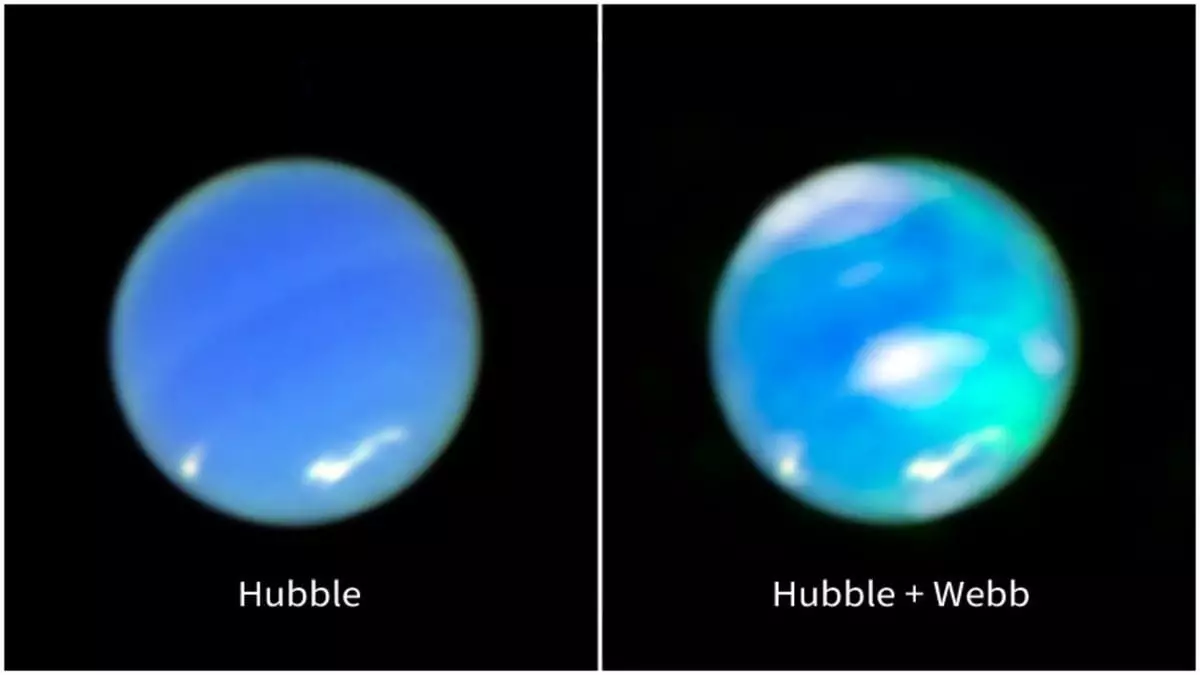For decades, Neptune has remained an enigmatic player in our solar system, shrouded in layers of mystery and conjecture. The recent revelation of its auroras, captured for the first time by the James Webb Space Telescope (JWST), marks a pivotal moment in our understanding of the ice giant’s atmospheric phenomena. Where once there was skepticism and speculation, now there is undeniable evidence, affirming that the complexities of Neptune are far richer than previously imagined.
The Disconnect Between Expectation and Reality
Prior to this groundbreaking discovery, planetary scientists viewed Neptune through the lens of historical data from missions like Voyager 2. While Voyager hinted at the existence of auroras, they were elusive and difficult to capture visually. What JWST has achieved, however, is not merely a snapshot, but rather a detailed exploration of Neptune’s atmospheric dynamics that questions our fundamental understanding of how auroras form on distant planets. On Earth, Jupiter, and Saturn, auroras predominantly light up the polar regions; yet Neptune challenges this viewpoint with auroras that appear in a chaotic array of unexpected locations. This anomaly reflects the planet’s peculiar magnetic field, which is not only tilted but also offset, directing solar particles in unpredictable manners.
The Enigma of Temperature Discrepancies
Among the stunning revelations brought forth by JWST is the astonishing cooling documented in Neptune’s upper atmosphere, which is now at temperature levels strikingly lower than those recorded during Voyager 2’s 1989 encounter. This drop, observed to be around half of what it was during the earlier flyby, raises significant questions about the dynamic climate of Neptune. Are we witnessing an accelerated cooling phase, or is this a reflection of long-term planetary trends? Moreover, the cooler ambient conditions seem to correlate with Neptune’s auroras being weaker and more challenging to detect, suggesting an intricate relationship between temperature and atmospheric phenomena.
A New Era of Discovery
The findings from JWST are not without their implications for future space exploration. The confirmed presence of trihydrogen cation (H3+) as a marker for auroral activity reveals a thread weaving through the tapestry of gas giant atmospheres. This ion, previously detected on other giants, underscores the necessity of specialized infrared instruments in pursuing further studies of the outer planets. The luminous window provided by JWST into Neptune’s auroras serves as a reminder that our universe is filled with unknowns that continue to challenge established scientific norms.
A Shift in Perspectives
With each new revelation, Neptune’s complexities urge us to reevaluate our models and expectations surrounding planetary atmospheres. As a center-left liberal viewpoint leans toward valuing scientific consensus and enlightening discourse, the uncovering of Neptune’s auroras speaks volumes. It resonates with the notion that in our quest for knowledge, we are continually confronted by the unpredictability of nature. We must embrace this intellectual humility as we forge ahead, driven by curiosity and a desire to explore the mysteries of the cosmos. Herein lies the power of modern observatories like JWST: not only do they capture elusive wonders, but they also guide us towards a future rich with discovery and understanding, even amid uncertainty.


Leave a Reply